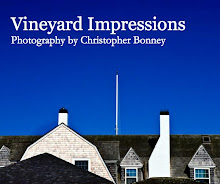Good Civic Engagement Requires
All us Us Working Together, 2012
(Click on images to see larger)
Those of us who are addicted to
photography take pictures for all kinds of reasons. We take pictures a lot of
the time for reasons we can’t explain. Every now and then I’ll photograph
something simply because the scene or the moment captures my fancy long enough
for me to consciously think about saving it in a photograph it. In this age of
digital photography, pictures cost you nothing but your time. So why not
photograph first and ask questions later?
Over the years I’ve built up
quite a collection of these stray images that don’t belong in any collection or
series. They’re little one-out stories.
Recently a friend and I were
asked to make a presentation about civic engagement to an audience of hundred
or so of Virginia’s municipal managers. They’re a generally savvy bunch of people
of all ages and levels of experience. They come from big cities, small towns
and rural counties.
To be honest, my first
inclination was to use just a few PowerPoint slides to affirm the big points of
our presentation. I’m a big fan of story telling as a presentation technique. Telling
our audience about real-world examples of how good civic engagement yields big
returns for local governments has a lot more meaning that a bunch of slides.
As Logical as a Chair Talking to a Fence, 2012
It was my co-presenter who
suggested that I bring some of my own photographs into our presentation. He
thinks more of my photography than I suspect I deserve. But I liked the idea of
juicing up the show with something other than even just a few dull text slides.
And I’m embarrassed to admit that it didn’t occur to me first that a single
photograph can convey more of story, more emotion and more than my blabbering
and preachy words.
But what to use?
My friend thought I’d show a lot
of pretty pictures from across Virginia. That seemed too much like vanity to me
because the pictures wouldn’t do much to advance our message about civic
engagement.
Then I realized that I have this
extensive body of stray photographic images that just might help out here.
Before the late night hour and fatigue stopped me from looking, I’d turned the
presentation into a series of a hundred or so photographic metaphors.
Our presentation was the last in
an intensive three-day conference. It was held at an oceanfront hotel. I
thought for sure that by this point in the schedule many of the people would
have ducked out to play on the beach or in the surf. But low and behold we
ended up with a giant ballroom full of fully wide-awake people. They asked
questions when the photos provoked them. They laughed when the photos made a
point humorously. They hung in for more than ninety minutes. They applauded
wildly at the end.
I don’t know if it was our
message or the pictures. But I know from their reaction that by using the
photographs we informed, influenced and entertained, and that in doing so we
just might have achieved our goal of compelling our audience of municipal
leaders re-think the way public policy decisions are made.
How Interested People Think Local Governments
Are in Listening to Them, 2010















